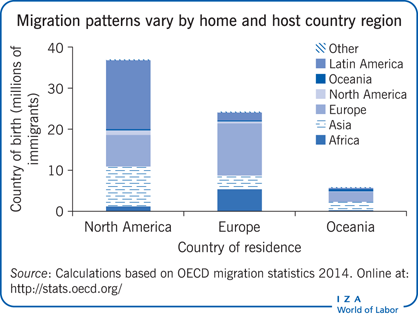Elevator pitch
Evidence suggests that immigrants face an initial decline in their occupational status when they enter the host country labor market but that their position improves as they acquire more country-specific human, cultural, and occupational capital. High-skilled immigrants from countries that are economically, linguistically, and culturally different from the host country experience the greatest decline and the steepest subsequent increase in their occupational status. In the context of sharp international competition to attract high-skilled immigrants, this adjustment pattern is contradictory and discourages potential high-skilled migrants.

Key findings
Pros
After a sharp initial decline, high-skilled immigrants experience a steep increase in their occupational status.
Proficiency in the dominant language in the host country is a key variable facilitating skill transferability.
High occupational mobility is desirable because it can attract high-skilled workers and lead to efficiency gains and stable careers.
High occupational mobility enables a rapid response to temporary shortages in occupation fields.
Cons
Migrants’ skill transferability is hampered by differences in institutions, cultural norms, and technologies between home and host countries.
Language deficiency can motivate return migration or circular migration, even of high-skilled migrants.
Low occupational mobility leads to occupational mismatch and persistent over-education, pushes immigrants into the social welfare system, and depresses wages.
Low occupational mobility can discourage high-skilled immigration.